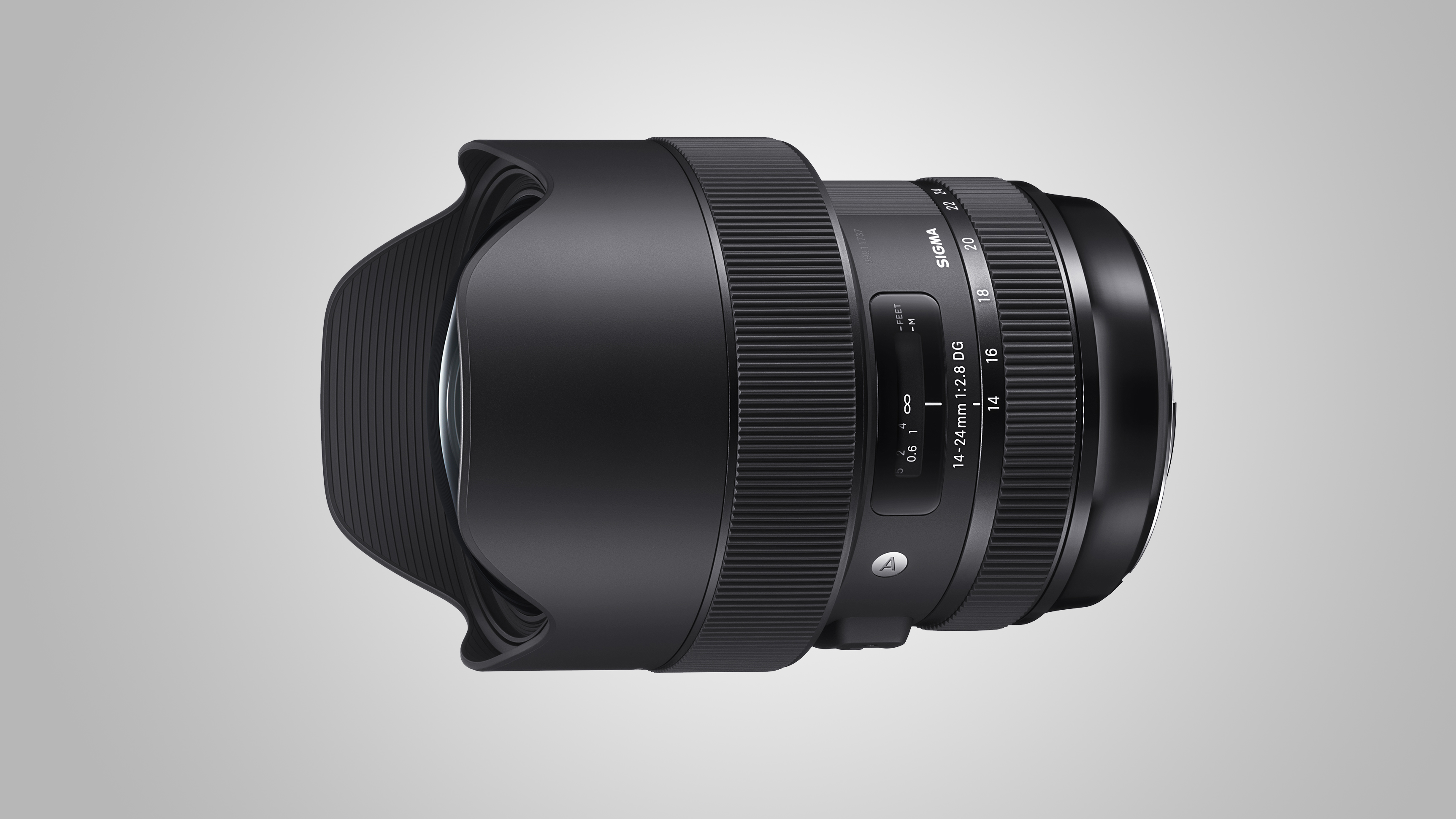TechRadar Verdict
If you're after a ultra-wide zoom lens for your full-frame camera, then Sigma's 14-24mm f/2.8 G HSM | Art is the pick of the bunch, outperforming competing own-brand lenses from the likes of Canon, Nikon and Sony.
Pros
- +
Fast, constant f/2.8 aperture
- +
Virtually distortion-free
- +
Superb build quality/handling
Cons
- -
Built-in hood, no filter thread
- -
Necessarily large and weighty
Why you can trust TechRadar
There are several wide-angle prime and zoom lenses in Sigma’s ‘Art’ line of Global Vision optics. This latest addition is most similar to the 12-24mm | Art lens, which itself is a revamp of the older 12-24mm II lens, gaining a constant f/4 aperture and a reduction in distortion. The new 14-24mm is almost the same size and exactly the same weight. It doesn’t go quite as wide, with a maximum viewing angle of 114 instead of 122 degrees, but is an f/stop faster and promises even better image quality.
Features
- Ultra-high-precision moulded glass aspherical element
- Ring-type ultrasonic AF system
- Compatibility with Sigma’s optional USB Dock
The 14-24mm is available in Canon, Nikon, Sigma and Sony E-mount options, each of which has the same optical line-up, featuring plenty of upper-class glass. Top of the list is an ultra-high-precision moulded glass aspherical element. Sigma claims that its manufacturing process for this type of optical element enables a new standard in excellence for wide-angle lenses. There are three aspherical elements in total, combined with three FLD (Fluorite-grade Low Dispersion) and three SLD (Special Low Dispersion elements). The complete optical path is based on 17 elements arranged in 11 groups.
Focal length: 14-24mm
Mount: Canon, Nikon, Sigma, Sony E
Filter size: N/A
Max aperture: f/2.8
Maximum magnification: 0.19x
Dimensions: 94 x 135mm
Weight: 1,150g
Typical of Sigma’s Art lenses, autofocus is courtesy of a ring-type ultrasonic system, which is both very fast and whisper-quiet, as well as enabling full-time manual override. The Canon-fit edition of the lens enables in-camera corrections for aberrations like color fringing, peripheral illumination and distortion, which we’ll come to later. There’s also compatibility with Sigma’s optional USB Dock, for fine-tuning performance and applying firmware updates, from a connected computer.
Build quality and handling
- Immaculately engineered
- Full set of weather-seals
- Focus ring has a smooth and fluid feel
Encasing the top-notch glassware, the barrel and mounting plate are immaculately engineered with a full set of weather-seals. Typical of ultra-wide lenses, a built-in lens hood gives physical protection to the bulbous, protruding front element as well as helping to reduce ghosting and flare. While the overall physical dimensions remain fixed throughout the zoom range, the front element does extend and draw nearer to the front edge of the hood at shorter focal lengths. Sigma offers an after-sales service to remove the fixed hood, which can be preferable if using the lens for multi-camera, virtual reality videography.
The focus ring has a smooth and fluid feel. As you’d expect in this calibre of lens, there’s a focus distance scaled beneath a viewing panel. Towards the rear, the zoom ring has a similarly smooth, high-precision feel and rotates in the same direction as own-brand Canon lenses, for extending or decreasing the focal length.
Performance
- Sharpness and contrast are very impressive
- Distortion incredibly low for this class of lens
- Direct sunlight can strike the front element
As with other Sigma Art lenses that we’ve tested, sharpness and contrast are very impressive, even when shooting wide-open at f/2.8. For such a wide-angle lens, the new Sigma is particularly excellent at retaining sharpness towards the edges and corners of the frame.
Another real achievement is that chromatic aberrations are practically impossible to spot
Similarly, levels of distortion are incredibly low for this class of lens. Indeed, distortion is barely perceptible throughout the entire zoom range, even when shooting straight-sided buildings in architectural photography. Another real achievement is that chromatic aberrations are practically impossible to spot, even around high-contrast edges towards the extreme corners of the frame. All in all, the compatibility with Canon’s in-camera corrections are somewhat academic.
Sign up for breaking news, reviews, opinion, top tech deals, and more.
At or near the shortest focal length, one thing you do need to be wary of is that direct sunlight can strike the front element unless you’re shooting with the sun pretty much behind you. This can create ghosting and flare and, for this aspect of performance, the Sigma is more average than outstanding, compared with similar ultra-wide zooms like the competing Nikon 14-24mm.
Verdict
We’ve been impressed by all of Sigma’s wide-angle Art lenses, and the 12-24mm gives an astonishing maximum viewing angle. This one doesn’t go quite as wide but delivers even better image quality with superb sharpness and contrast, restrained vignetting and incredibly minimal fringing and distortion. For us, the 14-24mm f/2.8 is the pick of the crop, and outperforms competing own-brand lenses from the likes of Canon, Nikon and Sony.
